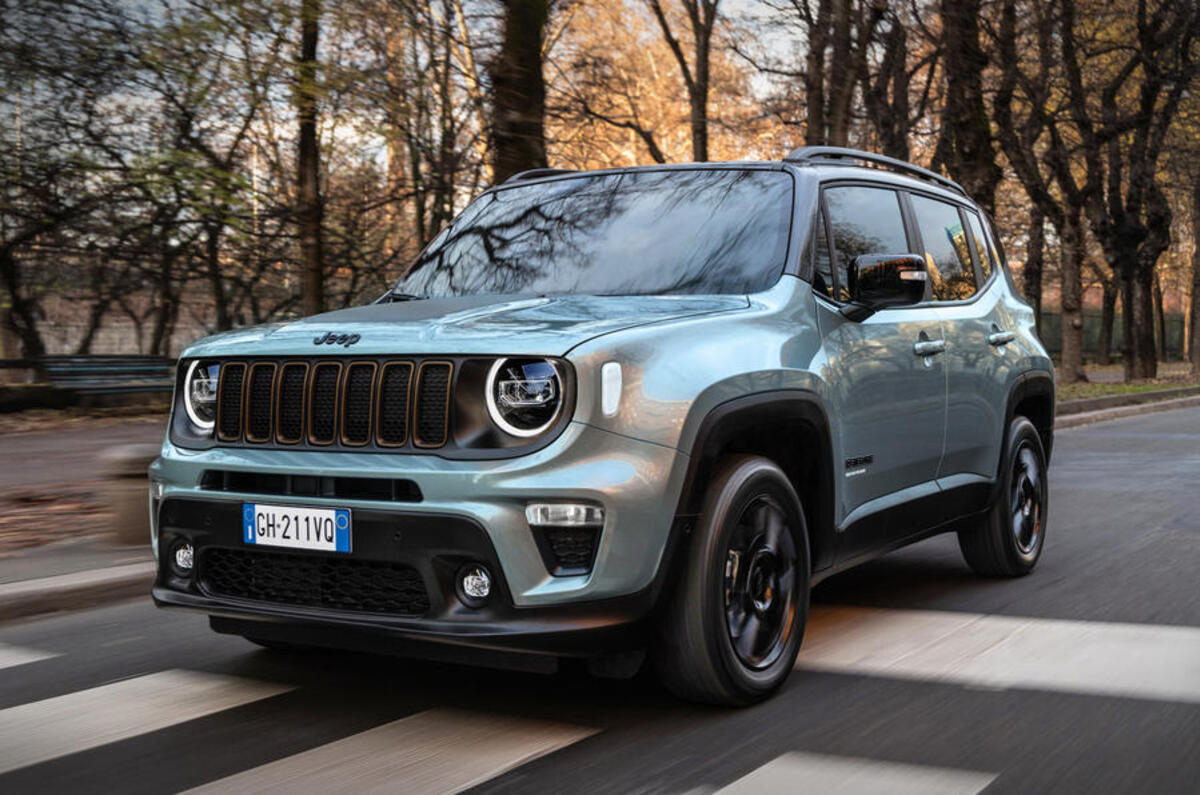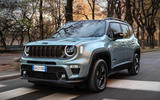What is it?
A Jeep that starts up silently is not something many will be used to. The new Jeep Jeep Renegade does just that, thanks to a new e-Hybrid powertrain that, the firm says, marks the latest step in its move to an all-electrified model range.
The model, along with the larger Jeep Compass e-Hybrid, joins Jeep’s line-up alongside the newly introduced plug-in 4xe hybrid variants. Unlike the 4xe, the e-Hybrid is front-wheel drive only. It also commands a £7000 premium over the entry-level, petrol Renegade and is slightly cheaper than the basic plug-in hybrid 4xe.
The all-new powertrain consists of a 128bhp 1.5-litre turbocharged engine, a 20bhp electric motor and a 48V battery that is positioned between the two front seats. Torque stands at 177lb ft. Jeep also claims emissions and fuel consumption improvements of up to 15%.
A second electric motor is attached to a new seven-speed dual-clutch automatic transmission, which, Jeep says, allows for a more enjoyable drive. You’ve also got some handy all-electric driving functions, including the aforementioned silent start-up (which Jeep has called e-launch), e-creeping, e-queuing, e-parking and reversing, and energy recovery under braking.
What's it like?
Largely, the Renegade makes good use of its electrification. The model’s e-creeping and e-queueing functions are effective and the energy recovery from cruising is excellent, particularly on steeper inclines. Granted, most drivers won’t have to contend with the steep hillside roads like on our drive around Stellantis’s base in Turin, but most should have no problems keeping the Renegade’s battery topped up.
The 1.5-litre petrol engine kicks in smoothly when accelerating in e-mode, although it can feel like the transition comes slightly too early. Still, Jeep describes the transition between EV and ICE as seamless and, unless you’re heavy on the accelerator, it is hard to immediately notice when you’re back on petrol power.
Jeep says electrifying the gearbox in this way helps to improve fuel consumption and at the same time driving dynamics. It’s not too bad, but on steeper inclines and faster roads, it felt sluggish to shift up and often left the engine gasping for air.
Handling, meanwhile, is still sophisticated and direct in the corners. Grip and stability are both decent, but a reliance on assistance tech somewhat dampens the Renegade’s feel and enjoyment. The ride is also largely uncompromised by the weight added by the battery and the two electric motors but, as with the standard Renegade, there’s significant vibration on tougher, rougher city Tarmac.
Not much has changed inside the Renegade. The interior appears robust in some areas and the doors are largely scratchy plastics. New customisation options to display hybrid-related statistics on the digital driver display are welcome, as is the panoramic roof fitted to our test car, which makes the cabin feel light and airy.
Should I buy one?
Those considering the e-Hybrid Renegade are likely to be interested in its eco credentials. Figures for the model have not been confirmed yet due to homologation reasons, but Jeep has promised combined economy figures of 46.3-49.3mpg for the larger Compass.







Join the debate
Add your comment
Largely, the Renegade makes good use of its electrification.
I honestly can't imagine *anyone* buying this thing...